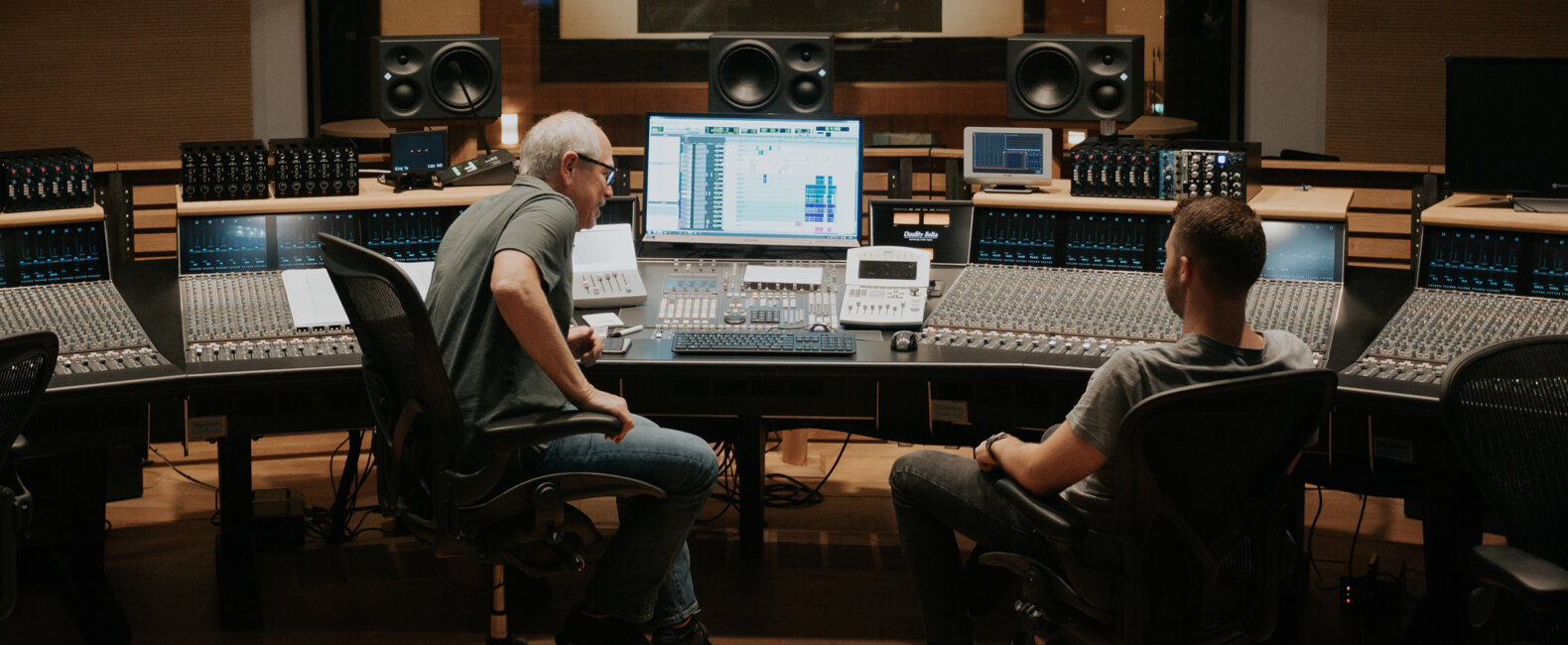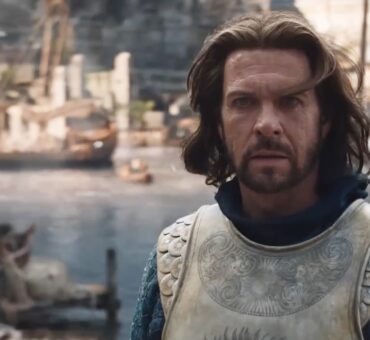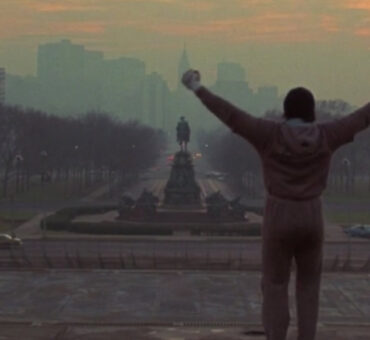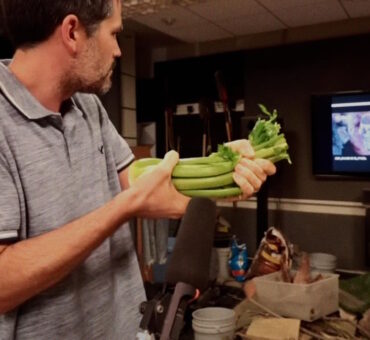We work with a lot of creatives who value music in their films — they know how important it is to the filmmaking process and the final product. But, in all honesty, we also interact with a lot of creatives who don’t. At all.
In our profession, it can be jarring to hear, “Who cares? Just throw some stock music in there.” It’s like nails on a chalkboard.
But, sometimes it makes sense they’d feel that way. The value of music in a film isn’t always talked about, or expressed explicitly, so why would they dedicate more resources for better music if to them it just serves as a filler or background to the imagery?
We know it’s so much more than that, so we thought we’d take a shot at explaining why quality music matters for your films.
This isn’t some altruistic statement about supporting art, either. We’re here to put our money where our mouth is and show you how quality music can make your creative work and processes better in any field of filmmaking — from YouTube to features, advertising to wedding films.
So, if you’ve ever felt like a soundtrack was low on your priority list or you could just throw something on in post, this is for you.

1. Use it as a starting point
We’ve heard dozens of great filmmakers talk about how music is first in their process and also perhaps the most important step in their process. During our time at Tribeca 2019, Martin Scorsese shared this story about how music has always played a role when he begins to dream up his next film:
The music was a combination of, you know, big band jazz, and opera, and of course rhythm and blues, and then rock and roll. My father liked guitars, so it was Django Reinhardt and [Quintette du] Hot Club de France, and so that for me it created images in my head when I was about four years old and five years old, that were abstract.
And that’s always been the way I start designing a picture, somehow music, I play certain kinds of music, and so you just let it go, you just let it go, you have to be alone for that, you’ve got to be in like, some room somewhere for a few days, that sort of thing. But the music is what scored our lives, and it was more than nostalgia.”
For us, it helps to think of your film music this way: Would you actually want to listen to this music? As Scorsese pointed out, the music he loved was actually the beginning of the work; he used it to get inspired and envision abstract imagery that would eventually inform his film.
It’s safe to say no one daydreams to generic music. They need a sound that’s personal to them, that makes them think, relax, and drift off. By using music as your starting point, especially music that you’re in love with, you’re bringing your personal taste to the forefront. Not only that, but you’re giving your audience a glimpse into the art that inspires you as well.
2. Connect with an audience
There’s a massive opportunity in your soundtrack to familiarize yourself with an audience. When we spoke with Music Supervisor Alec Stern (DDB Chicago, We Are Unlimited, and Leo Burnett), he pointed out that people know when something lacks in authenticity. But, even more importantly, they truly connect with something that is authentic:
“We want music that sounds like what our demographic would actually listen to. Or is what they actually listen to. Not even just sounds like, but is. There has been a huge push toward that, and so I think that authenticity is just something that I think that people, consumers, everybody has a very low bullshit tolerance for. And know when they’re being sold something that isn’t real.

So I’m thrilled by this shift toward authenticity. If you want a real, genuine feeling, then you’ve got to go with what’s real. There’s such a difference between low-quality production music that was made for the sole purpose of being used in an ad, versus something that just has real heart and soul in it. I think that people just respond across the board more favorably and more emotionally to stuff where the intention is more authentic.”
People naturally bring their own emotions and experiences to music. It’s a way to tether memories and recall them for future reference. So, when you use music that people actually like, you’re giving them one more reason to like your film and connect with it.
3. Redirect your process
A while back we chatted with Dan Bowen of Pulse Films and he made a great point about the power music can have in a cut:
“By finding a track that is unexpected — not just top 40 or a big rock track that everybody knows — by making a quite distinct musical choice which is unexpected, that song or that piece of music can be the hook around which you build. And that becomes an idea. That drives choices to do something or not do something with the visuals. And the piece has purpose suddenly.”
Your script or storyboard doesn’t have to be the only thing that drives change in a story. Why not use music, too? By taking work from real artists, you have the ability to read into the song — its interesting melodies, arrangements, and builds — and use that for creative inspiration and a direction in your edit.
We like to think of film and music as a 50/50 relationship, so by that rationale, we believe the music should shape the story just as much as the film does. By taking quality music into consideration early in the process, you can begin to build some of the film’s moments around key points in a song or a mood it evokes. It’s just another tool you can use to make a film that’s unique and authentic.

4. Show off your style
This is what YETI’s Head of Content Scott Ballew thinks about music in his films:
“I think music is the most important to me; it’s what I’m most excited about. It’s what separates a film, and it’s how you create a unique film. Music is how you underscore emotions; I think it’s how you really put a signature on a film. Because with lenses, and cameras, and drones, it’s a level playing field these days. There are a lot of incredible DPs, but I think having music, compositions, or people that are scoring your films that aren’t part of the process, is really how you create your own identity.”
There are a few things to unpack here. First, music is an incredible opportunity for a film and to stand out and show off its style. Story and image have a trajectory, a planned path that will lead to some sort of conclusion. However, the music can be on its own path. Films like First Man, Manchester by the Sea, and classics like The Third Man each use the soundtrack to amplify the story. They bring an entirely different, unexpected personality.
By using artists and composers in your film, you’re bringing a different creative vision or input outside of your own. And that vision can be invaluable in so many creative instances. By including new collaborators, you’re opening the film up to new viewpoints that may see things you never even noticed.
We’re ready to experience some big emotions and the minute the music booms out, we are on board for the ride.
— Composer Neil Brand
5. Make your film physical
Films represent the art of manipulation. We’re using sight and sound to trick an audience into feeling something that’s real, which is a beautiful thing. It’s the entire reason we go to the movies. In a 2013 article by the BBC, composer Neil Brand speaks to the soundtrack for a film and how it can manipulate as no other medium can:
“The darkness, the strangers, the anticipation, the warm comfortable embrace of the cinema seat. We’re ready to experience some big emotions and the minute the music booms out, we are on board for the ride. Human beings are very good at interpreting sound. Right back to when our prehistoric selves will have heard a twig snap in a forest and thought ‘that’s it, I’m dead.’
We have a very deep understanding of what music is doing, and it’s very physical. We can feel it going into our ears via sound waves and it can produce all sorts of physical responses, including in the right circumstances an actual thud to the stomach.”
Given the right care and attention, the soundtrack for a film brings a physical element that the image simply cannot. Our eyes are receiving information via an image, but we’re physically experiencing soundwaves. We’re feeling vibration and rhythm, which creates an entirely different experience.
As Brand pointed out, that twig snap creates a physical response for danger within us. But, music can create so many other things as well — anxiety, desire, anger, hunger, and dozens more. By giving music the attention it deserves, we can create an immersive effect with our films. This effect can force an audience to participate in every single moment. Music makes our films four-dimensional.
It’s Time to Hear the difference
All of this may seem obvious coming from a brand that provides music. But, for many of the reasons it’s so effective, it can also be difficult to describe why quality music is so valuable. We deal in words like feeling, inspiration, style, and influence, which can be very difficult to put a value on.
What we can put a value on, however, is your films. That’s why we’re all here, right? We all want to create better, more effective films. That may mean selling more products, moving people, making them laugh, or just getting an audience to drift away for a few moments.
The unseen half of a film, it’s sound, is perhaps the most underutilized way to get to that success. Over and over again, we hear that music is the fastest way to improve the overall film. By investing in your film’s music, you’re making an investment that will immediately provide a return.
Ready to take the first step towards a better soundtrack? Create a free account on Musicbed to explore music from hundreds of incredible artists and composers. With options for every budget, like single-song purchases and monthly subscriptions, better films are just a click away.




















































































